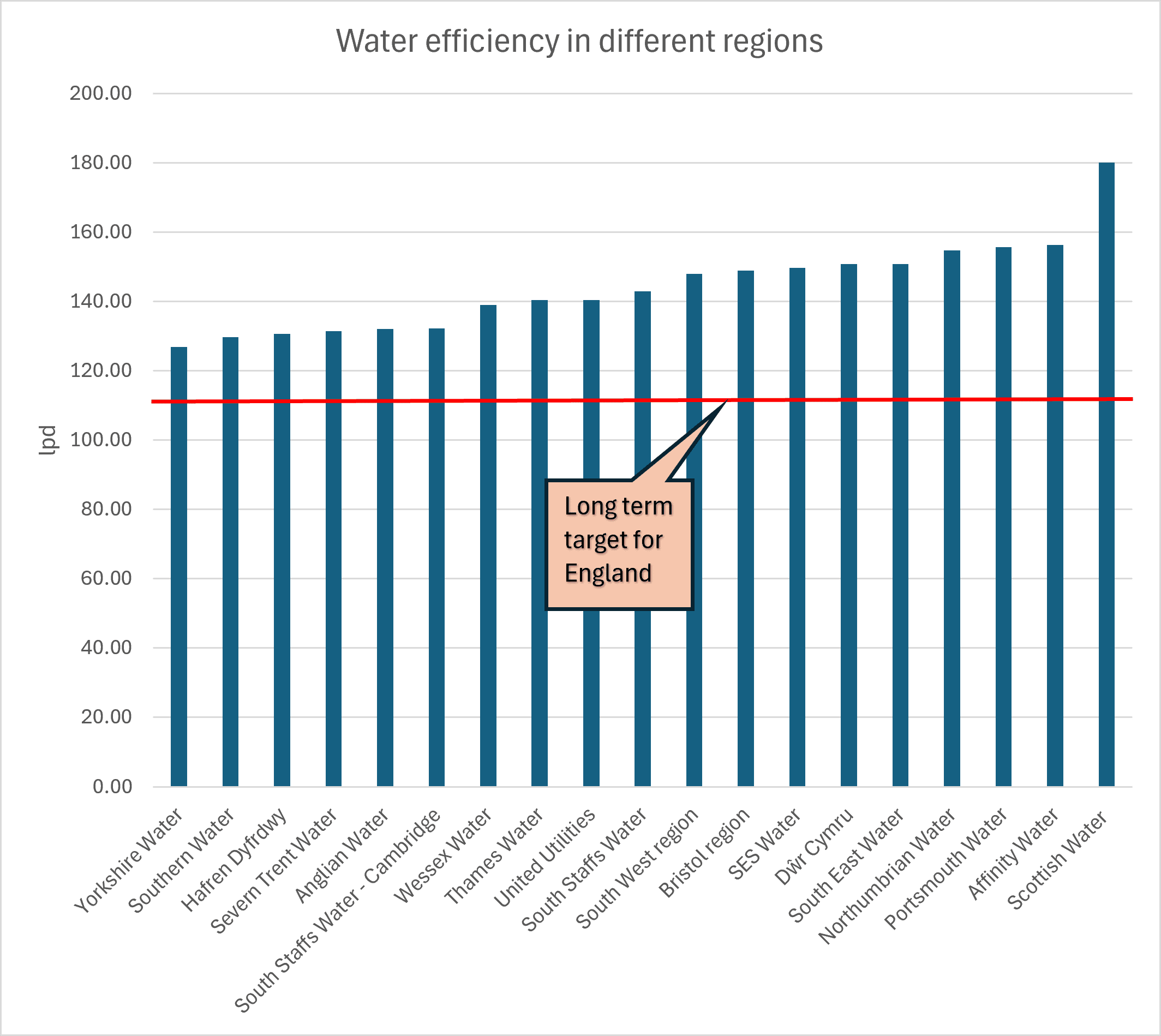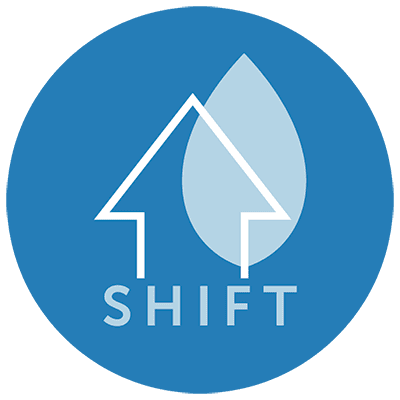
Background to water efficiency
Water is a precious resource, and with climate change leading to hotter summers and less rainfall, water efficiency is becoming increasingly important. Sustainable water management is key, and data from regulators like Ofwat can help us understand which regions are performing well and which need to improve.
Ofwat data
The chart below shows recent data from Ofwat [1]. According to this dataset the best region for water efficiency appears to be Yorkshire, while Scotland looks to be the worst. The unit of measurement used for this comparison is “litres per person per day” (lpd). A key takeaway from the data is that all regions are currently performing worse than the long-term English target of 110 lpd [2]. This target was set with future climate and population changes in mind.

Here are some points to consider:
- The data for Scottish Water efficiency is not clear, as their website has two different figures. The larger of the two was used for the comparison.
- There is no current water efficiency target for Scotland or Wales.
- The regulator for Welsh social landlords has started to include water efficiency in its housing quality standard [3]. Similarly, the equivalent housing quality standard in England is under consultation, with water efficiency being a part of the discussion [4].
SHIFT data
As well as national data, at SHIFT, through our work with a variety of clients, we also have other useful data.
We work with over 60 UK social landlords to carry out complete environmental assessments. Part of the assessment is an analysis of the water efficiency of their housing stock. Here is data from the latest 40 assessments:

In addition, as ESOS lead assessors we also do energy audits for a variety of non-domestic clients. Amongst other things, we look at hot water flow rates and we find that some hot water outlets really do have inefficient flow rates which means unnecessary water usage and wasted energy. These are very cost-effective to rectify.
What next?
Beyond national data, water efficiency can be improved at a local level. For social landlords in the UK, a few simple actions can be taken to boost water efficiency. These include:
- Conducting a baseline assessment of water usage down to the UPRN level.
- Creating a sustainability database that tracks water-efficient fittings.
- Ensuring that new-build properties have water-efficient fittings installed by the builder.
For non-domestic building occupants, simple and cost-effective measures can also be implemented. For example, a water efficiency review can be commissioned, or hot water flow rates can be included in an energy audit. Monitoring water usage can also help to identify leaks that are costing you money.
If you are interested in carrying out your own water efficiency measures, either stand alone or as part of energy audits, please feel free to get in touch for a chat. [email protected]
[1] Ofwat figures: https://www.ofwat.gov.uk/wp-content/uploads/2024/10/WCPR-23-24.pdf
[2] https://shiftenvironment.co.uk/news/water-efficiency-targets-for-uk-housing/
[3] https://shiftenvironment.co.uk/news/consultation-on-new-quality-standard-for-welsh-social-homes
[4] https://shiftenvironment.co.uk/news/the-decent-homes-standard-is-getting-an-environmental-upgrade/
